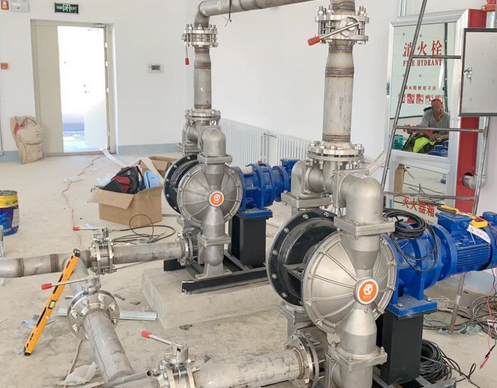Maintenance and care of electric diaphragm pumps
Maintenance and care of electric diaphragm pumps are the key to ensuring their normal operation and extending their service life. Here are some detailed maintenance and care guidelines:
1. Regular inspection and tightening
Screws and bolts: Regularly check whether all screws and bolts on the electric diaphragm pump are loose, especially key parts such as the pump body connection and motor installation. If they are loose, they should be tightened in time. It is recommended to calibrate the fastening parts every two months, but the calibration cycle can also be adjusted appropriately according to the utilization rate of the diaphragm pump.
Gaskets and seals: Check whether the gaskets and seals at the joints of the pump body are intact. If there is wear, aging or leakage, they should be replaced in time. When replacing, the same specifications and models as the original should be selected, and attention should be paid to the installation direction and connection position.
2. Lubrication and cleaning
Lubrication system: Regularly check the lubrication system of the diaphragm pump to ensure that the lubricating oil is sufficient and free of impurities. According to the usage, the lubricating oil should be replaced regularly to ensure the normal operation of the diaphragm pump. For the reducer, an appropriate amount of lithium-based grease needs to be added during the overhaul every other year.
Pump body cleaning: Clean the electric diaphragm pump regularly to remove surface stains and debris. When cleaning the inside, disconnect the power supply, disassemble the pump body, clean the inside of the pump body with clean water or solution, and remove impurities and sewage. When cleaning the outside, avoid using hard objects to scrub to prevent scratches on the pump body surface or damage to accessory parts.
3. Diaphragm and diaphragm maintenance
Diaphragm inspection: The diaphragm is the core component of the diaphragm pump and should be regularly checked for wear, aging or damage. If abnormalities are found, a new diaphragm should be replaced in time. When replacing the diaphragm, the inlet and outlet valves should be closed first, the bolts should be removed, the old diaphragm should be removed, the installation groove should be cleaned, and then the new diaphragm should be installed and the bolts tightened.
Diaphragm protection: During use, the diaphragm pump should be avoided from idling for a long time to avoid damage to the diaphragm. At the same time, attention should be paid to the characteristics of the medium to ensure that the medium temperature, pressure and other parameters are within the appropriate range of the diaphragm pump to avoid damage to the diaphragm.
4. Maintenance of motors and reducers
Motor inspection: Regularly check whether the motor wire is damaged or aged, and replace it in time if necessary. Check whether the motor bearing is normal. If there is abnormal noise or heating, the bearing should be replaced in time. Regularly remove dust and clean the motor to maintain good heat dissipation of the motor.
Reducer maintenance: The reducer is an important part of the electric diaphragm pump, and its operating status and lubrication should be checked regularly. If the reducer has abnormal noise, vibration or oil leakage, it should be stopped for inspection and repair in time.

5. Pipeline and valve maintenance
Pipeline inspection: Regularly check whether the pipeline and valve are loose or leaking. If abnormalities are found, tightening, replacement and other maintenance work should be carried out in time.
Valve maintenance: For various valves on the electric diaphragm pump (such as safety valves, check valves, etc.), their working status and sealing performance should be checked regularly. If the valve is found to be leaking, malfunctioning, etc., it should be repaired or replaced in time.
6. Safety precautions
Operation parameters: In order to ensure the safe operation of the electric diaphragm pump, the operating parameters of the pump should be set strictly in accordance with the process to avoid damage to the pump due to excessive pressure.
Shutdown and repair: If an accident occurs during the operation of the diaphragm pump and the pump fails to work, the pump should be shut down and repaired in time. Do not force it to run to avoid causing greater damage.




